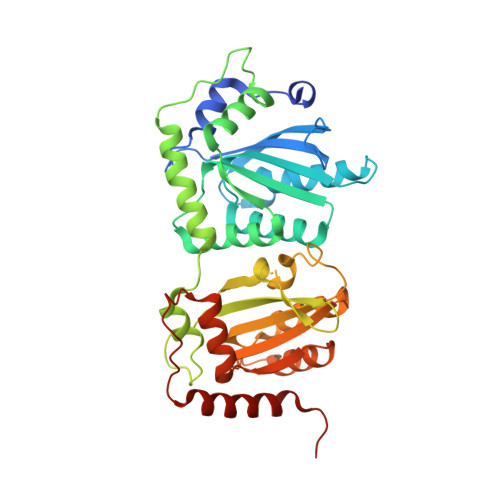Understanding the structural basis of HIV-1 restriction by the full length double-domain APOBEC3G.
Yang, H., Ito, F., Wolfe, A.D., Li, S., Mohammadzadeh, N., Love, R.P., Yan, M., Zirkle, B., Gaba, A., Chelico, L., Chen, X.S.(2020) Nat Commun 11: 632-632
- PubMed: 32005813
- DOI: https://doi.org/10.1038/s41467-020-14377-y
- Primary Citation of Related Structures:
6P3X, 6P3Y, 6P3Z, 6P40 - PubMed Abstract:
APOBEC3G, a member of the double-domain cytidine deaminase (CD) APOBEC, binds RNA to package into virions and restrict HIV-1 through deamination-dependent or deamination-independent inhibition. Mainly due to lack of a full-length double-domain APOBEC structure, it is unknown how CD1/CD2 domains connect and how dimerization/multimerization is linked to RNA binding and virion packaging for HIV-1 restriction. We report rhesus macaque A3G structures that show different inter-domain packing through a short linker and refolding of CD2. The A3G dimer structure has a hydrophobic dimer-interface matching with that of the previously reported CD1 structure. A3G dimerization generates a surface with intensified positive electrostatic potentials (PEP) for RNA binding and dimer stabilization. Unexpectedly, mutating the PEP surface and the hydrophobic interface of A3G does not abolish virion packaging and HIV-1 restriction. The data support a model in which only one RNA-binding mode is critical for virion packaging and restriction of HIV-1 by A3G.
- Molecular and Computational Biology, Departments of Biological Sciences, Chemistry, University of Southern California, Los Angeles, CA, 90089, USA.
Organizational Affiliation:

















